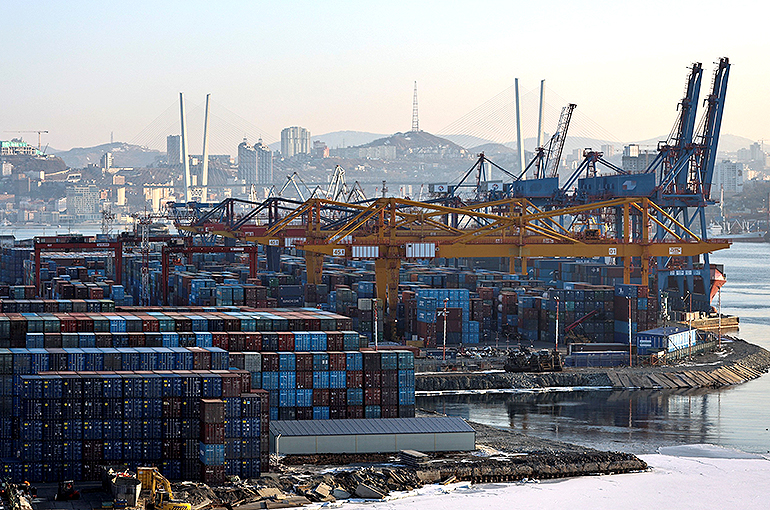 Experts Worry About Fees as China Adds Transit Port Vladivostok in Russia
Experts Worry About Fees as China Adds Transit Port Vladivostok in Russia(Yicai Global) May 19 -- The Port of Vladivostok, China's latest transit port addition for goods traveling from northeastern Jilin province to southern Chinese cities, increases route options but logistics experts fear it might also add costs.
So far there has been no disclosure of changing the transit policy for domestic shipments going through Russian territory, Kang Shuchun, chairperson of Shippingchina.Com, told Yicai Global. But even if there is no tariff, Chinese firms care about loading and unloading charges, labor costs, and modern facilities, Kang added.
The General Administration of Customs recently announced that Jilin province will add the port in the Russian Far East as an overseas transshipment port. Due to that, containers leaving Jilin for big southern Chinese cities can save about CNY3,000 (USD426) in land transport costs, Zhang Zhenjia, professor at Shenyang University, said to Yicai Global.
Making a pit stop in Vladivostok does not result in extra tariffs right now, and the customs clearance procedure is somewhat simplified, Chen Yang, editor-in-chief of shipping information platform Xinde Marine News, told Yicai Global.
Besides widening transport options for domestic shipments, the move has international significance. In the current trade backdrop, adding Vladivostok as an overseas transshipment port poses huge potential, and it is likely to help export more Chinese goods to Japan, South Korea, and Southeast Asian countries, Kang said.
However, the actual effects remain to be seen because various factors affect shipping costs, according to a person in charge of an international logistics firm in Dalian, Liaoning province.
Because of the Russia-Ukraine conflict, traffic in certain European routes is restricted and even Japanese and South Korean firms have started delivering goods via Vladivostok, which has boosted shipping charges. Earlier, it cost only some hundreds of US dollars to ship cargo to Vladivostok from Dalian but now it costs USD2,000, per the above-mentioned logistics expert. The fee hikes are directly linked to port efficiency as added demand increases waiting times.
Editors: Shi Yi, Emmi Laine